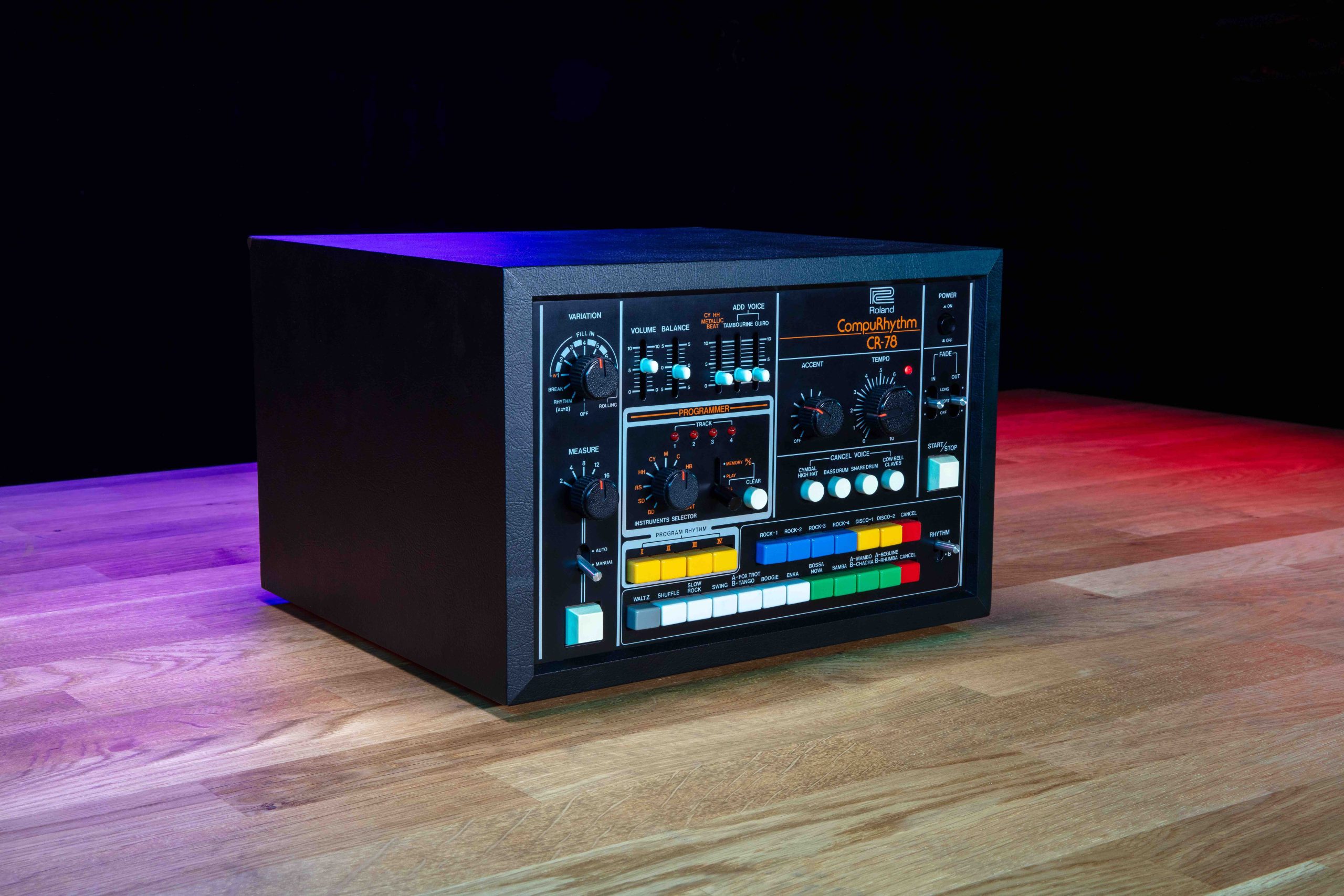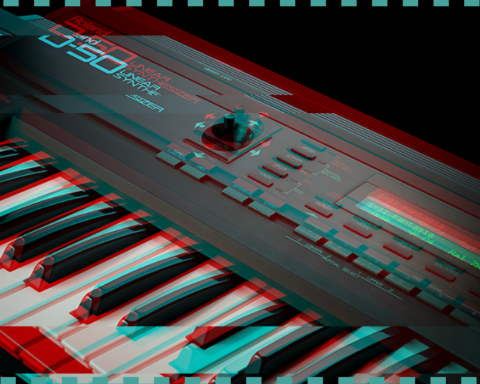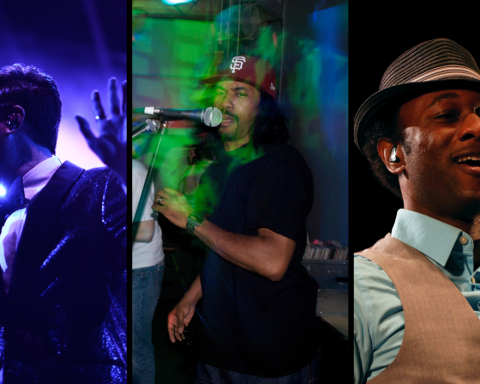Programmability is such an integral part of drum machines that we now take it for granted. Yet there was a time when drum machines were preset-only. In those days, all one could do was mash a button to start a foxtrot rhythm and adjust the tempo knob. That is, until 1978 and the arrival of Roland’s CR-78. As the first computer-controlled programmable drum machine, the CR-78 helped free musicians from the tyranny of the preset. It also set the stage for the arrival of Roland’s world-conquering TR-808 and TR-909 drum machines in the next decade. But first, the CR-78 would make some waves of its own.
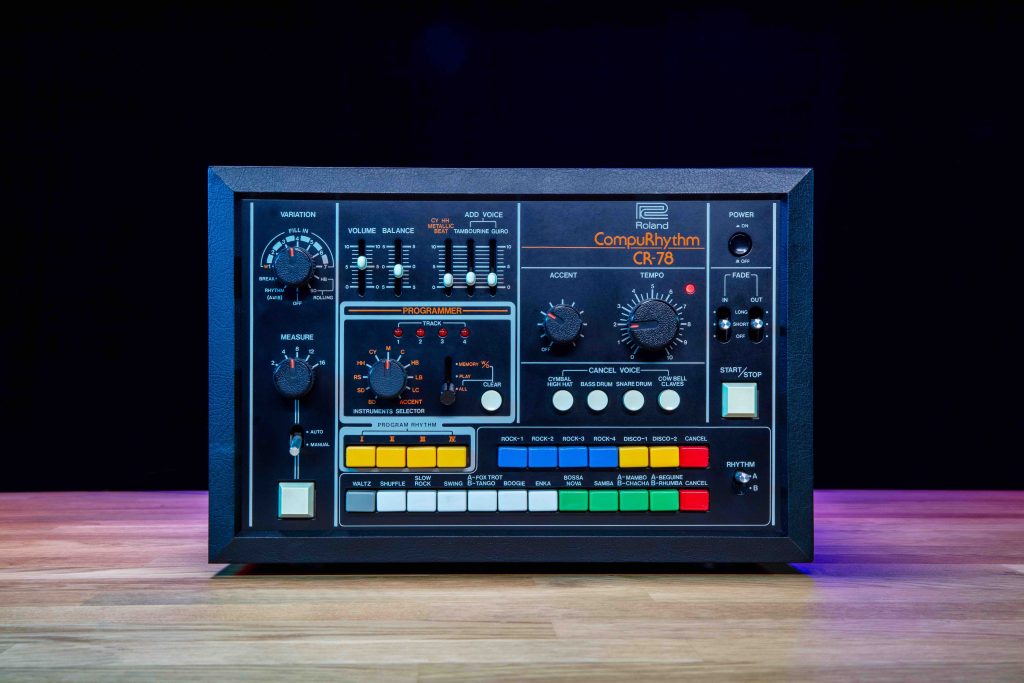
The Spirit Of 78
The late 1970s was a time of musical and rhythmic change in pop music. Genres like new wave, post punk, disco, and reggae were all forging exciting new paths with rhythm, borrowing from and inspiring each other. It was also a time for change in the world of musical instruments. Cutting-edge technology made new things possible, like affordable polyphony and synthesizer memory recall. Drum machines were about to benefit from these advances as well.
The CR-78 debuted in 1978 amid these radical musical and technological changes. While the CR-78 appeared to be just another preset organ rhythm machine at first glance, it was much more. Indeed, the unit was precisely what musicians had been waiting for. To understand the CR-78’s place in drum machine history—and how disruptive it was—we first need to back up a few years and take a closer look at its ancestors.
"The CR-78 debuted in 1978 amid radical musical and technological changes."
Organ Origins
In the ’70s, organ players utilized rhythm accompaniment devices that sat atop their instruments. While basic compared to modern drum machines, these devices played analog-generated preset sequences of popular rhythms. Many were Latin-based, such as samba and bossa nova, but they also had rock and later disco settings.
After a variety of rhythm boxes, such as the TR-77, TR-330, and TR-66, Roland debuted the CR-78 in late 1978. Thanks to its unique sound and advanced features, the CR-78 instantly appeared on pop records, quickly becoming one of the first must-have drum machines. Musicians sought out the CR-78 sound as they would a synthesizer or guitar, and it fit in perfectly with the rhythm-focused music of the times.

"Musicians sought out the CR-78 sound as they would a synthesizer or guitar, and it fit in perfectly with the rhythm-focused music of the times."
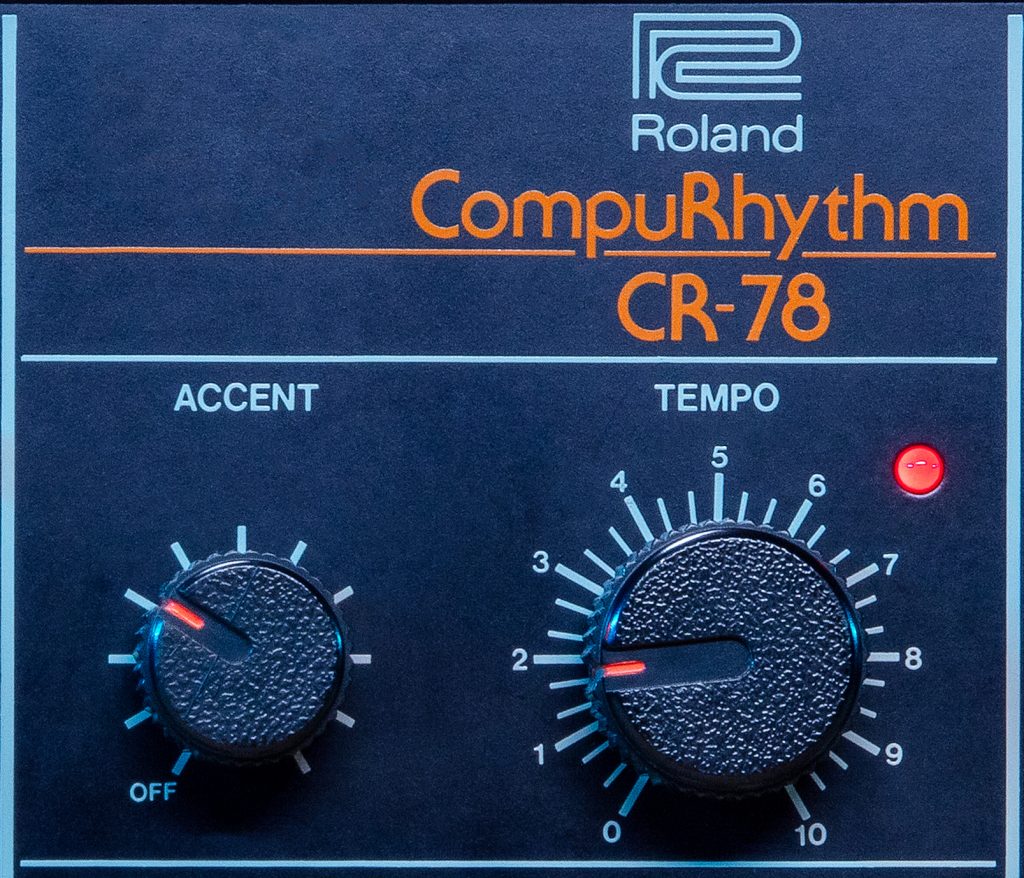
Design For the Times
At first glance, the CR-78 didn’t look all that different from other rhythm machines of the era. It arrived housed in a wooden, box-like enclosure, with a front panel oriented vertically to make programming from on top of an organ easy. The CR-78 had colorful rows of preset buttons, a big analog tempo knob, and 1970s living room styling. A closer look, however, revealed something revolutionary: a section labeled Programmer. The CR-78 was digitally programmable—a world first—and helped change the term from “rhythm machine” to “drum machine.”
The CR in the name stands for CompuRhythm, a nod to the NEC microprocessor chip inside that made saving custom patterns possible. No longer were you stuck with preset rhythms. Users were free to punch in their own via step programming, and those beats got saved to RAM and protected by a nickel-cadmium battery even while off. The only caveat was one needed the optional WS-1 remote programmer. Roland manufactured 8000 CR-78 units. Yet they only turned out around 2000 WS-1 programmers, making them relatively rare even at the time.
With the programmer’s scarcity, most musicians used the presets, making them what people love about the CR-78 today. Still, thanks to advancements Roland developed for its rhythm machines, the CR-78 had plenty of ways to make even the presets sound unique.
"The CR-78 had colorful rows of preset buttons, a big analog tempo knob, and 1970s living room styling."
Preset Power
The CR-78 included 20 presets organized into two rows. The top featured rock and disco, while the bottom had a variety of settings, including Latin rhythms, waltz, swing, and the Japanese-market-focused enka. Musicians could combine these by pressing multiple buttons simultaneously, resulting in new rhythms.
The Rhythm switch allowed users to select between A and B settings, meaning some presets had an additional version. Using the Variation knob, one could choose from a number of different fills and set it to trigger every two, four, eight, 12, or 16 bars—or manually. You could even create fade-ins and outs to spice up live performances.
There was less control over the individual sounds themselves. Pre-baked percussion included the usual suspects like bass drum, snare, rim shot, high hats, cymbals, and tambourine. Plus, there were Latin-type sounds: maracas, claves, cowbell, high bongo, low bongo, low conga, and güiro. The CR-78 also had preset or programmable accents with an accent knob to adjust strength.
"Cute and almost childlike, the sounds of the CR-78 worked perfectly with the music of the time."
Charmingly Simple
While users couldn’t alter the placement of the sounds in the presets, the CR-78 did provide quite a bit of control over other sonic aspects. Along with the overall volume slider, there was a Balance adjustment. The latter used filtering to emphasize either the low of the bass drum or the high hats and cymbals.
Users could mute different elements with the Cancel Voice section. Tambourine and güiro had dedicated volume sliders in the Add Voice section. Finally—and uniquely—there was Metallic Beat. This slider introduced a buzzy and electronic-sounding additional cymbal and high-hat pattern.
The sounds themselves were charmingly simple. They weren’t particularly realistic, but that wasn’t a concern for users, many of whom were forging new paths with sound. Cute and almost childlike, the sounds of the CR-78 worked perfectly with the music of the time.
Finger On the Trigger
Another surprising feature included on the CR-78 was trigger out. This function and clock in allowed musicians to use the drum machine in electronic studio settings—not just sitting on an isolated organ. The trigger out was instrumental in one of the first songs to use the CR-78, Blondie’s “Heart of Glass.”
Recently purchased by the band, the CR-78 featured prominently in the chart-busting disco crossover song. The rhythm that starts the song in isolation combines the Mambo and Beguine presets. The CR-78 also lent a hand with the bassline. Its trigger out modulated the filter of keyboardist Jimmy Destri’s SH-5, creating the famous pulsing bassline.
"Another surprising feature included in the CR-78 was trigger out. This function and clock in allowed musicians to use the drum machine in electronic studio settings."
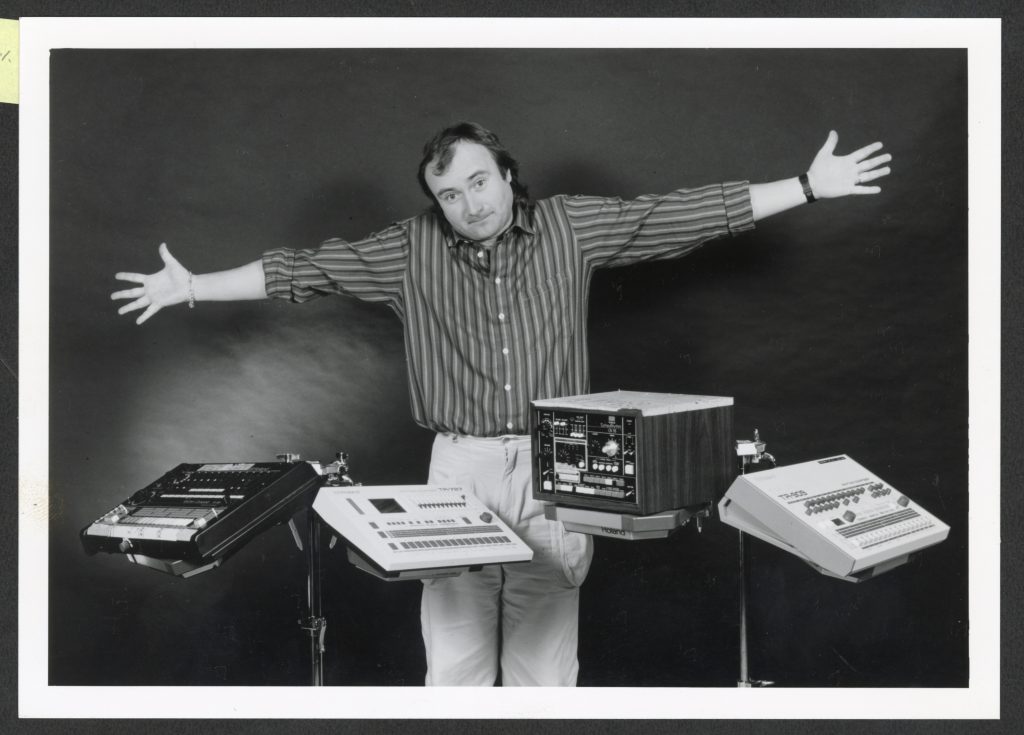
In The Air
Blondie may have been among the first to use the CR-78 in a song, but Phil Collins arguably made the drum machine the most famous. In 1981—the same year the CR-78 went out of production—the former Genesis drummer dropped “In The Air Tonight.” A smash single from his equally popular Face Value album, “In The Air Tonight,” is a slow burn whose first half features the CR-78’s Disco 2 in its A variation. Run through reverb and plenty of compression, it provides a haunting, minimal rhythmic backdrop for Collins’ vocals. Until the iconic acoustic drum fill slams in.
Other prominent uses of the CR-78 include the Rock 1 pattern on Daryl Hall & John Oates’ “I Can’t Go For That (No Can Do),” Rock 4 on “Vienna” by Ultravox, Enka on “Lady In Red” by Chris De Burgh, pretty much every track on Metamatic by John Foxx, and many others.
The CR-78 also emerged as an essential ingredient of numerous soul, dub, and post-disco tracks. These include “Joy and Pain” by Franky Beverly and Maze, The Congos’ “Congo Man” (produced by Lee “Scratch” Perry), “Rude Movements” by Sun Palace, and Wally Badarou’s “One Day, You Won’t Give It Away.”
Next Generation
The CR-78 may have marked the end of the line of Roland’s organ-top rhythm machines. Yet we can call it the first of the company’s modern drum machines. Many of the CR-78’s features, including the A/B variation switch, the fill button, and programmability, appeared on the TR-808.
The TR-808 and later instruments pioneered the TR-style of step programming. Yet Roland took the CR’s unique operation via the WS-1—manually entering notes and rests with a pair of buttons—and ported it to the BOSS Dr. Rhythm DR-55. That instrument became massively popular with post punk and new wave bands like New Order. Over the years, countless hip-hop and electronic music producers have come to relish the crispy attack of the CR-78 hi-hats. The CR-78 now appears in the TR-8S and TR-6S, bringing its legendary thump to a new generation.

"The CR-78 bridged two musical eras: the organ-led past and the computerized future."
Power and Influence
The power and influence of the CR-78 have continued to grow in the four and half decades since its release. Modern musicians rediscover it every generation. The unique sounds and operation of the CR-78 have inspired artists like Radiohead, Modest Mouse, and Todd Terje.
While the CR-78’s trigger out and sync worked well with other gear, the development of MIDI—so necessary for modern music making—was still a few years off. Nowadays, it’s possible to have the CR-78 modified to include MIDI, giving users control over start/stop, tempo, and individual notes. This means musicians can program it with a hardware sequencer or a DAW.
The CR-78 bridged two musical eras: the organ-led past and the computerized future. More than a preset rhythm machine, thanks to programmability, the CR-78 was the first actual drum machine. It’s an inspiration box for a new generation of musicians exploring rhythm and forging new genres. Ultimately, the CR-78 is a lasting contributor to the modern musical landscape.
